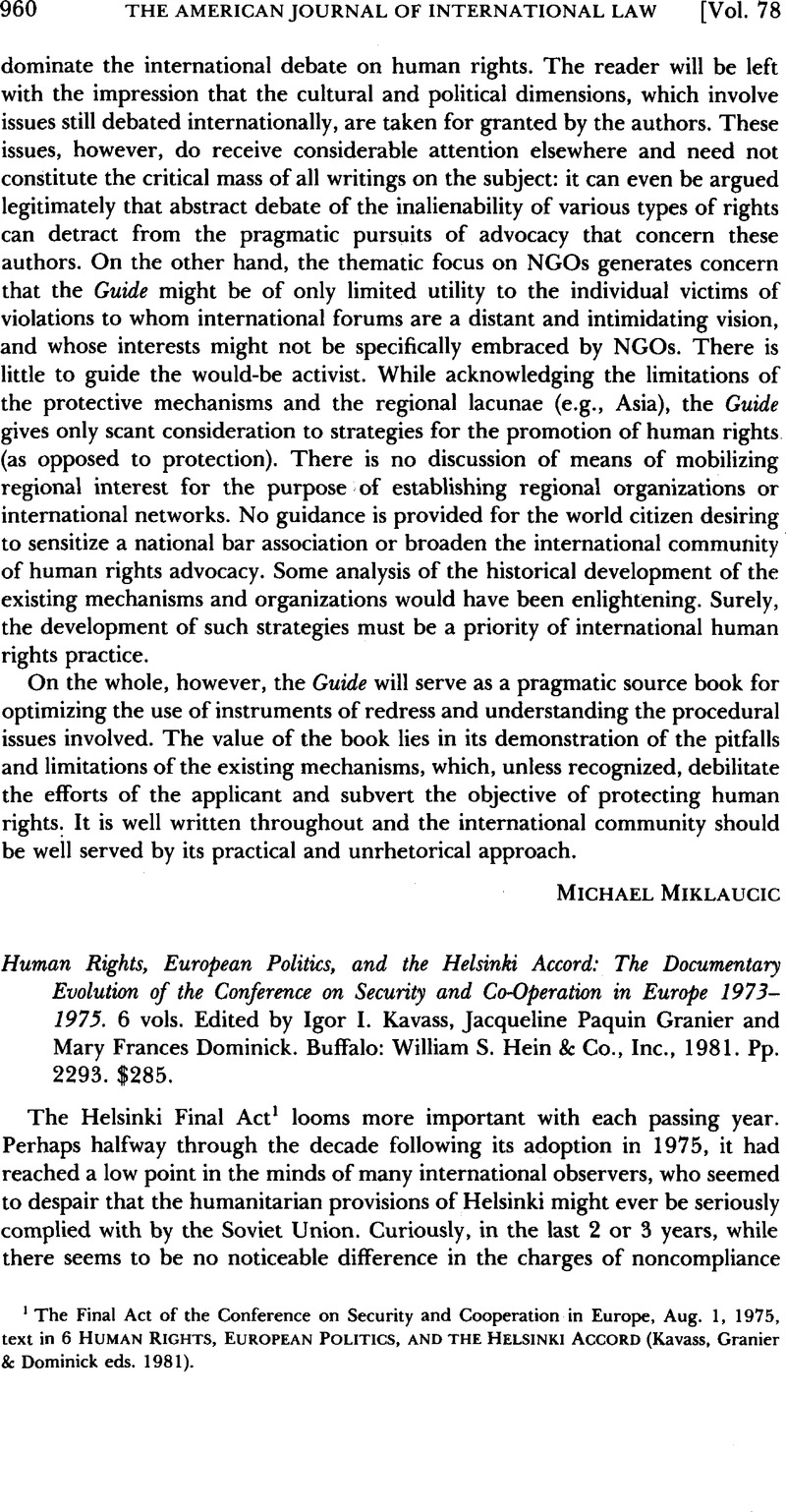No CrossRef data available.
Published online by Cambridge University Press: 16 May 2017

1 The Final Act of the Conference on Security and Cooperation in Europe, Aug. 1, 1975, text in 6 Human Rights, European Politics, and the Helsinki Accord (Kavass, , Granier, & Dominick, eds. 1981)Google Scholar.
2 14 ILM 1292, note (1975).
3 Higgins, Appendix to Report of the United Kingdom Helsinki Review Group, From Helsinki to Belgrade 1, 4 (1977).
4 Paust, , Transnational Freedom of Speech: Legal Aspects of the Helsinki Final Act, 45 Law & Contemp. Probs. 53, 59 n. 36 (1982)CrossRefGoogle Scholar.
5 D’Amato, A., The Concept of Custom in International Law 153–54 (1971)Google Scholar.
6 Gottlieb, , Global Bargaining: The Legal and Diplomatic Framework, in Law-Making in The Global Community 109, 121 (Onuf, N. ed. 1982)Google Scholar.
7 Gottlieb, , Relationism: Legal Theory for a Relational Society, 50 U. Chi. L. Rev. 567, 582 (1983)Google Scholar. For similar views, see Paust, supra note 4, at 56–57. Professor Gottlieb’s position that there is a middle ground between law and nonlaw is similar to intuitionists in mathematics who deny the Aristotelian law of the excluded middle. See Kline, M., Mathematics: The Loss of Certainty 234–39 (1980)Google Scholar.
8 Russell, , The Helsinki Declaration: Brobdingnag or Lilliput?, 70 AJIL 242, 246 (1976)Google Scholar.
9 See, e.g., Baxter, , Multilateral Treaties as Evidence of Customary International Law, 41 Brit. Y.B. Int’l L. 275 (1965–66)Google Scholar.
10 See D’Amato, , The Concept of Human Rights in International Law, 82 Colum. L. Rev. 1110, 1130–31 (1982)Google Scholar.